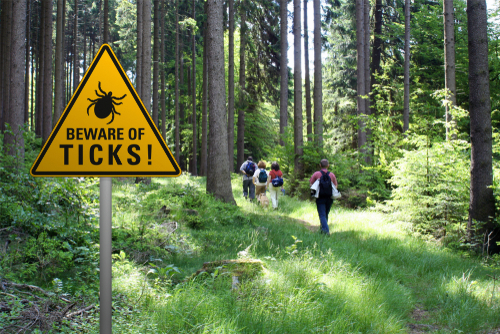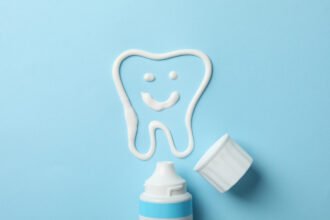- Put On Long-Sleeve T-Shirts and Pants When You’re Outside
- Use Insect Repellent on Any Skin That is Exposed Outdoors
- Check Yourself and Your Family Members for Ticks Early and Often
- Remove Any Ticks You Might Find as Quickly as Possible
- Look for Signs of Lyme Disease After Exposure to Ticks
- Recognize That You Can Catch Lyme Disease More Than Once
- Make Lyme Disease Prevention More of a Priority for Your Family Today
Lyme disease prevention starts with you. Here are some Lyme disease prevention tips for avoiding this illness, as well as some symptoms to watch out for. There are only about 30,000 Lyme disease cases reported to the Centers for Disease Control and Prevention every year. But studies have suggested there could be as many as 300,000 people who are actually diagnosed with the disease on an annual basis.
Lyme disease is caused by a specific kind of bacteria called Borrelia burgdorferi that can be transmitted to humans from black-legged or deer ticks through bites. Initially, Lyme disease can cause minor symptoms like fevers and headaches. But once it reaches the later stages, it can cause everything from arthritis and severe fatigue to vertigo and mental confusion.
Lyme disease prevention is something you should put into practice to prevent your family from ever having to deal with the dangerous side effects of Lyme disease. Here are some tips that will reduce your risk of being exposed to Lyme disease.
Put On Long-Sleeve T-Shirts and Pants When You’re Outside
Are you and your family planning on spending any time near a wooded area? Before you do, you should all put on long-sleeve T-shirts and pants so that ticks don’t have direct access to your skin at any time.
This won’t necessarily stop ticks from latching on to your clothing and coming along for the ride with you. But it will stop them from being able to bite you as soon as you come into contact with them.
If possible, try to wear lighter colored clothing so that it’s easier to spot ticks on your clothes. And once you get home, check your clothes for ticks one last time before throwing them into the washing machine.
Use Insect Repellent on Any Skin That is Exposed Outdoors
In addition to wearing long-sleeve T-shirts and pants whenever you play outside with your family, you should also use insect repellent to keep ticks away. Specifically, stock up on insect repellent that contains 10% DEET as it’s designed to protect you from ticks for up to two hours. Only use as much insect repellent as you need based on how long you plan on being outdoors.
Check Yourself and Your Family Members for Ticks Early and Often
From the moment you step outside, you should keep Lyme disease prevention in mind. Every so often, take a break and have a “tick check” to see if you or your kids have any ticks on them. Take a close look at every single part of the body. Most people look for ticks on their arms and legs. But you can also find them on your back, stomach, and even on your head under your hair.
It’s not a bad idea for parents to comb through their children’s hair carefully once they return indoors to see if any ticks have set up shop there. The last thing you want to do is allow ticks to hide in plain sight and take a toll on a family member.
Remove Any Ticks You Might Find as Quickly as Possible
If you happen to find a tick on yourself or on a loved one, it’s important for you to spring into action immediately. It takes 36 to 48 hours for most ticks to bite a person and cause Lyme disease. But you shouldn’t waste a second if you come across a tick on a person’s body.
Take a pair of tweezers and gently remove the tick while pulling on its head or mouth. Some ticks can be difficult to remove, so it might take some real effort to do it. This is something many of the top dog blogs recommend pet owners spend a lot of time on after walking through any forest or grassy areas. As hard as it is to find a tick on a human, think about how challenging it would be on a dog.
Once you’re done, inspect the area to see if any part of the tick was left behind. If it was, continue working to remove it. Then, contact a doctor right away to seek treatment for yourself or your loved one.
Look for Signs of Lyme Disease After Exposure to Ticks
If you’re ever bitten by a tick and exposed to Lyme disease, you might not realize it right away. It can take time for the disease to show itself.
There are signs of Lyme disease that you want to look out for. Here are a few of the most common signs that people will see:
- Fever
- Chills
- Headaches
- Muscle aches
- Joint pain
- Fatigue
There are also some signs of chronic Lyme disease that could mean big trouble. These signs include:
- Severe headaches
- Neck stiffness and soreness
- Severe joint pain
- Heart palpitations
- Impaired vision
- Extreme fatigue
- Dizziness
- Memory loss
Don’t ignore these symptoms! They could get worse over time and allow Lyme disease to wreak havoc on your family.
Recognize That You Can Catch Lyme Disease More Than Once
Lyme disease symptoms can be painful and can affect your life in many ways. But the good news is that you can receive treatment for Lyme disease. There are antibiotics like doxycycline and amoxicillin that can be used to get rid of Lyme disease. Most people will be able to effectively treat the disease within just two to four weeks.
But one thing you definitely want to keep in mind is that you can get Lyme disease more than once. If you ever get bit by a tick that puts Borrelia burgdorferi back into your body, it could force you to seek treatment again.
So don’t be lulled by a false sense of security after enduring Lyme disease once. It can rear its ugly head a second (or third!) time and could cause something called Post-Treatment Lyme Disease Syndrome. That will leave you dealing with Lyme disease symptoms for the foreseeable future
Make Lyme Disease Prevention More of a Priority for Your Family Today
Want to make sure you and your family don’t ever have to get a handle on a Lyme disease case? Staying away from heavily wooded areas is a start. Wearing long-sleeve T-shirts and pants will also help with your mission. But at the end of the day, remaining vigilant about keeping ticks off your body and the bodies of your family members are the only way to ensure Lyme disease prevention.










